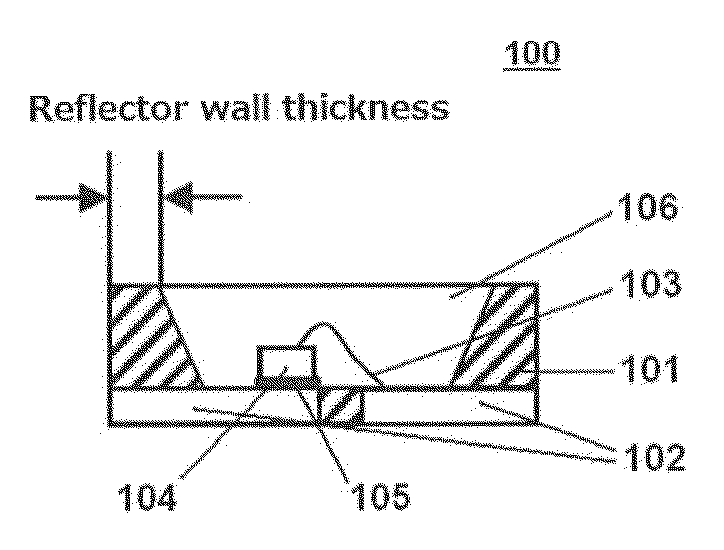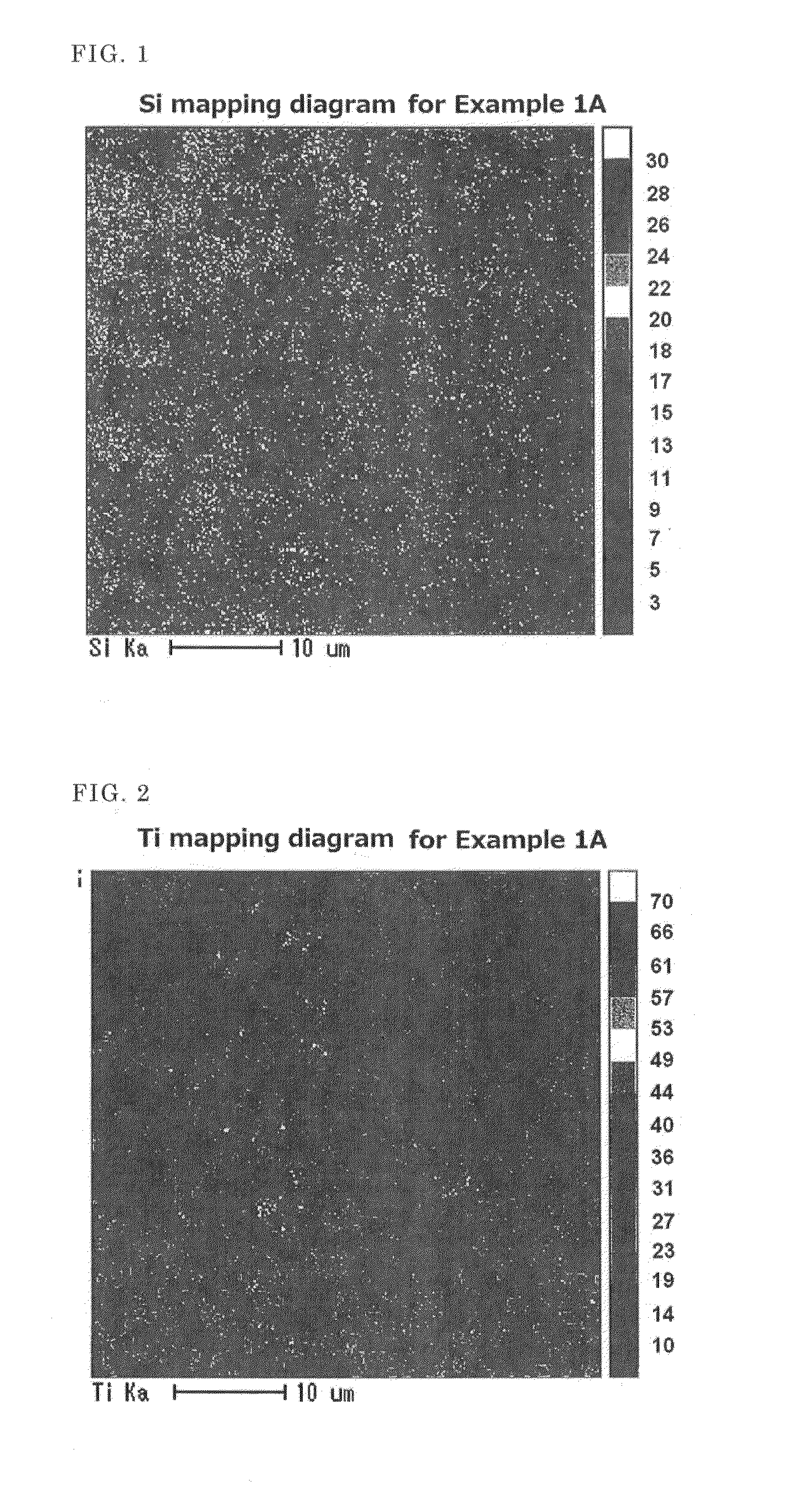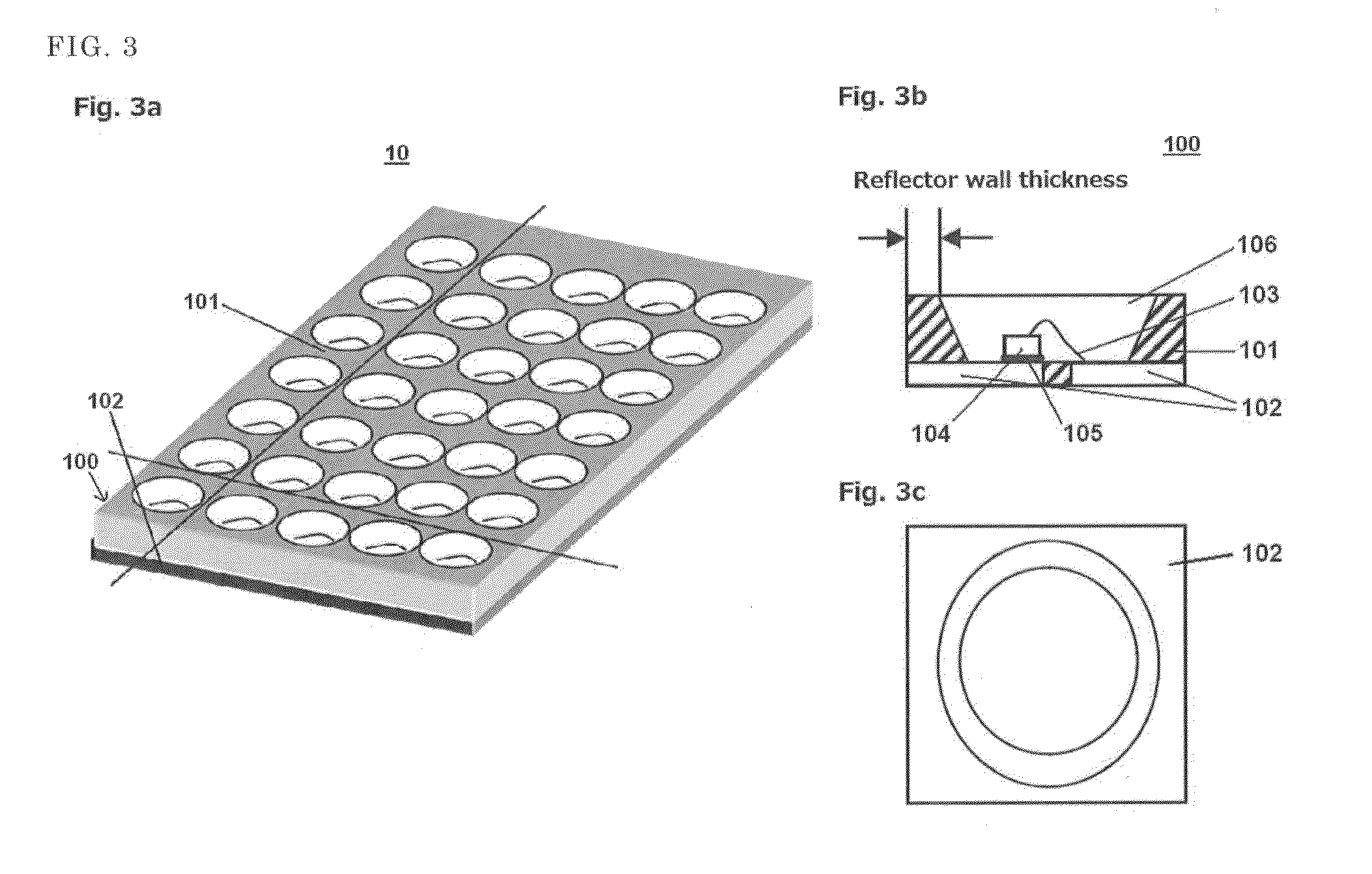Composite particle, method of producing same, resin composition containing the particle, reflector formed from the composition, and light-emitting semiconductor device using the reflector
- Summary
- Abstract
- Description
- Claims
- Application Information
AI Technical Summary
Benefits of technology
Problems solved by technology
Method used
Image
Examples
example 1
[0051]As shown in Table 1, fumed silica (SiO2) (Aerosil 380, manufactured by Nippon Aerosil Co., Ltd.), titanium dioxide (TiO2) (CR-60, manufactured by Ishihara Sangyo Kaisha, Ltd.), fumed alumina (Al2O3) (SpectrAl 100 manufactured by Cabot Corporation) and water were mixed together using a mixing device until a uniform mixture was obtained, thus producing a series of clay-like mixtures. Each of these mixtures was placed in a muffle furnace at 400° C., 600° C. or 800° C. and heat-treated for 5 hours, and was then cooled to room temperature to obtain a sintered product.
TABLE 1Rawmaterial(units:partsbyExampleExampleExampleExampleComponentmass)1A1B1C1D(1)Silica50703070(Aerosil380)(2)CR-60503020(TiO2)SpectrA1304010100(Al2O3)(3)Water10101010Evaluation results400° C.Partially insufficient sintered productsexist600° C.Vitrified800° C.
[0052]Following coarse crushing of the vitrified block produced by baking at 800° C. in each of Examples 1A to 1D, crushing was performed using a ball mill to...
example 2
[0054]Each of the composite oxides obtained by baking at 400° C. in Examples 1A to 1D was crushed in a ball mill until a fine powder was obtained, and the crushed powder was then regulated using a sieve to obtain a particle size of 50 μm or less. Each of these powders was melted by sprinkling onto a flame at 2,000° C., and was then cooled, thereby producing a series of spherical composite oxides 2A to 2D. Each of these composite oxides was composed of particles having a spherical shape and a uniform composition distribution. The particle size distribution of each composite oxide is shown in Table 5. The numerical values in Table 5 indicate mass % values. In Example 1A, electron microprobe analyzer (EPMA) mapping diagrams of the silicon (Si) and the titanium (Ti) in the composite oxide obtained by baking at 400° C. are shown in FIG. 1 and FIG. 2, respectively.
TABLE 3ExampleExampleExampleExampleParticle size2A2B2C2Dgreater than 100μm101075 to 100μm1289450 to 75μm2012151530 to 50μm2535...
example 3
[0055]Raw materials (mixed fine powders) having a blend ratio shown in Table 4 were granulated in the presence of a small amount of water using a granulator. Each of the obtained granular powders was melted by sprinkling onto a flame at 2,000° C., thus producing a series of spherical composite oxide particles 3A to 3D. The particle size distribution of each of the obtained composite particles is shown in Table 5.
TABLE 4Rawmaterial(units:partsExampleExampleExampleExampleComponentby mass)3A3B3C3D(1)Silica50707070(Aerosil380)(2)Aeroxide502020TiO2 P25(TiO2)Aeroxide301010Alu C(Al2O3)(3)Water22210
TABLE 5ExampleExampleExampleExampleParticle size3A3B3C3Dgreater than 150μm1020100 to 150μm325275 to 100μm111418750 to 75μm3134362130 to 50μm2121213010 to 30μm171512251 to 10μm1111512less than 1μm5313
(A) Vinyl Group-Containing Organopolysiloxane
PUM
| Property | Measurement | Unit |
|---|---|---|
| Temperature | aaaaa | aaaaa |
| Temperature | aaaaa | aaaaa |
| Percent by mass | aaaaa | aaaaa |
Abstract
Description
Claims
Application Information
 Login to View More
Login to View More - R&D
- Intellectual Property
- Life Sciences
- Materials
- Tech Scout
- Unparalleled Data Quality
- Higher Quality Content
- 60% Fewer Hallucinations
Browse by: Latest US Patents, China's latest patents, Technical Efficacy Thesaurus, Application Domain, Technology Topic, Popular Technical Reports.
© 2025 PatSnap. All rights reserved.Legal|Privacy policy|Modern Slavery Act Transparency Statement|Sitemap|About US| Contact US: help@patsnap.com



